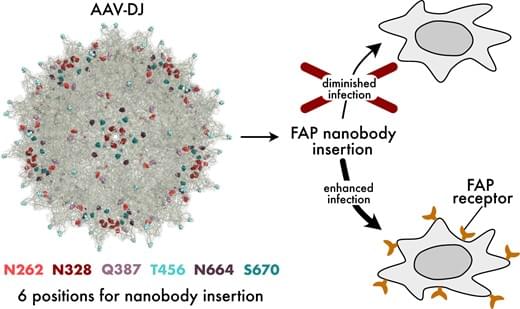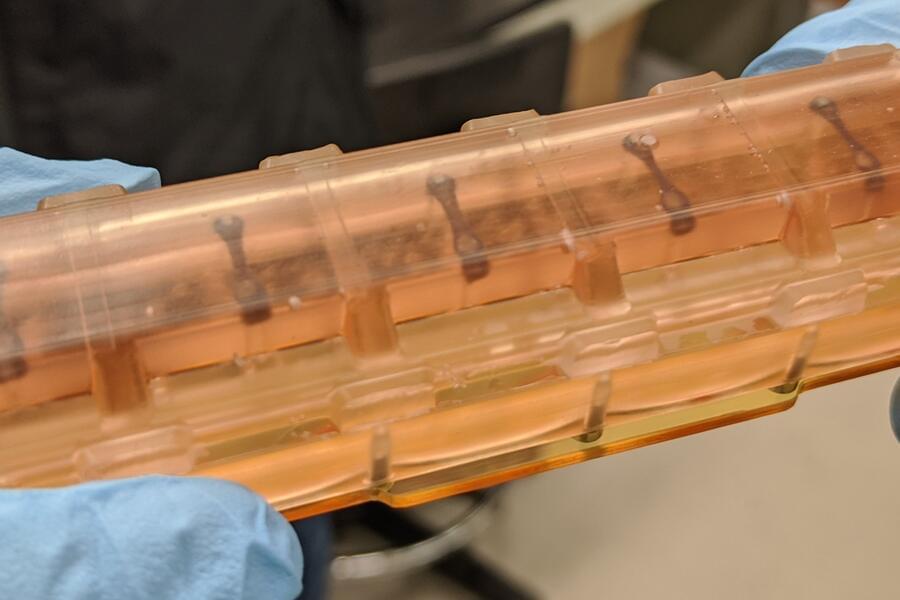Innovative research from Vilnius University sheds light on how DNA methylation impacts cellular aging and healthspan.



Genetic testing company settles with plaintiffs over breach that was revealed when hacker published link to database labeled ‘ashkenazi DNA Data of Celebrities’
The breach, which occurred last October, affected more than 6.9 million customers and included users’ personal details such as their location, name and birthdate, as well as some information about their family trees. That data was shared on BreachForums, an online forum used by cybercriminals.
According to court documents, the data breach was revealed October 6 after a hacker going by the pseudonym Golem, a reference to the Jewish mythical defender made of clay, published a link to a database labeled ashkenazi DNA Data of Celebrities. According to the lawsuit, the hacker referred to the list as the most valuable data you’ll ever see, though most of the names were not famous.
Expanding Healthy Human Lifespan for All — Dr. Mehmood Khan, MD — CEO, Hevolution Foundation.
Dr. Mehmood Khan, MD is the Chief Executive Officer of Hevolution Foundation (https://www.hevolution.com/), a first of its kind non-profit organization that funds research through grants and provides investments in biotech to incentivize healthspan science across disciplines and borders for the benefit of all. Established by a Saudi Royal Decree, with its headquarters in Riyadh, with additional international hubs to support the expansion and execute the global mission, it’s vision is to expand healthy human lifespan for the benefit of all humanity.
Hevolution Foundation aims to be positioned as a global leader, catalyst, partner, and convener, to increase the number of scientists entering the field, to increase the investable opportunities in the field of aging, and to help shape the regulatory and government environment.
Dr. Khan also currently serves as the Executive Chairman of Life Biosciences Inc. where he joined the company in April 2019 as the Chief Executive Officer and Board Member. Life Biosciences was founded to advance scientific research and develop innovative new therapies to improve and extend healthy lives for everyone.
Dr. Khan previously served as Vice Chairman and Chief Scientific Officer of Global Research and Development at PepsiCo, a Fortune 50 company employing upwards of 250,000 employees across 22 brands. At PepsiCo, Dr. Khan played a pivotal role in the company’s global R\&D efforts to create breakthrough innovations in food, beverages, and nutrition, including the incorporation of healthier and more nutritious offerings across its portfolio. Dr. Khan also oversaw PepsiCo’s global sustainability initiatives based on the belief that success in business is inextricably linked to the sustainability of the world we share.
https://youtube.com/channel/UC8Gtb6QcDOTbwcsDJo1bcGg
This little boy is really smart. I’m like in my 50’s this kid is barely 10, but much smarter than I am. Share and show him support. We need to have incentives for kids to thrive educationally. Props to the kids parents, they really raised an inspirational talent.
Sean is an aspiring brain and heart surgeon and he has created a name for it. He wants to be a “Neurocardio surgeon”. A word he created from Neurologist and Cardiologist. He is a STEM Educator Education Promotor/Advocate. He loves to learn and teach and wants to make the learning of science fun for all. Sean wants to create the awareness that science is not complex and can be seen in everything we do and in our everyday life. Sean is an advocate for positivity and shares motivation everywhere he goes. Sean is managed by his mom.

A nice study by Hoffmann et al. where nanobodies were inserted into various locations on adeno-associated virus (AAV) capsids. The authors also ablated hepatocyte tropism by mutating the heparan binding domain of the AAVs. These strategies greatly enhanced cell type specific targeting (in vitro).
Abstract. Adeno-associated virus (AAV) has been remarkably successful in the clinic, but its broad tropism is a practical limitation of precision gene therapy. A promising path to engineer AAV tropism is the addition of binding domains to the AAV capsid that recognize cell surface markers present on a targeted cell type. We have recently identified two previously unexplored capsid regions near the 2/5-fold wall and 5-fold pore of the AAV capsid that are amenable to insertion of larger protein domains, including nanobodies. Here, we demonstrate that these hotspots facilitate AAV tropism switching through simple nanobody replacement without extensive optimization in both VP1 and VP2. Our data suggest that engineering VP2 is the preferred path for maintaining both virus production yield and infectivity. We demonstrate highly specific targeting of human cancer cells expressing fibroblast activating protein (FAP). Furthermore, we found that the combination of FAP nanobody insertion plus ablation of the heparin binding domain can reduce off-target infection to a minimum, while maintaining a strong infection of FAP receptor-positive cells. Taken together, our study shows that nanobody swapping at multiple capsid locations is a viable strategy for nanobody-directed cell-specific AAV targeting.

The human brain’s remarkably prolonged development is unique among mammals and is thought to contribute to our advanced learning abilities. Disruptions in this process may explain certain neurodevelopmental diseases.
Now, a team of researchers led by Prof. Pierre Vanderhaeghen (VIB-KU Leuven), together with scientists of Columbia University and Ecole Normale Supérieure has discovered a link between two genes, present only in human DNA, and a key gene called SYNGAP1, which is mutated in intellectual disability and autism spectrum disorders.
Their study, published in Neuron, provides a surprisingly direct link between human brain evolution and neurodevelopmental disorders.

An international team of scientists, composed of researchers from the Complutense University of Madrid, Saint Louis University’s Madrid campus, and the University of California, has proposed a new theory suggesting that spacetime could be made up of “entangled virtual bosons”, similar to the double helix of DNA. This finding, which could have significant implications for the unification of gravity and electromagnetism, was recently published in the journal General Relativity and Gravity.
The research was led by Professor Robert Monjo, who holds a PhD in physics and mathematics from Saint Louis University’s Madrid campus, in collaboration with Professor Rutwig Campoamor-Stursberg, head of the Department of Algebra, Geometry, and Topology at the Complutense University of Madrid, and researcher Álvaro Rodríguez-Abella from the University of California, Los Angeles. According to the authors, their work represents an important step forward in understanding the true nature of spacetime. Monjo states: Up until now, there has been a significant gap between gravity and the other forces of nature, but with this study, we have found a link that could unite them.
One of the key aspects of this study lies in the extension of the idea of “color” symmetry—a concept from quantum chromodynamics—applied to gravity. This approach could allow gravity and electromagnetism to be interpreted as manifestations of a more general theory. Symmetries, defined as invariances of observed quantities under different transformations, are fundamental to understanding modern physics. In this case, the researchers have generalized these symmetries to propose what they call “colored gravity”, a theory that expands on Einstein’s ideas about gravity.


CRISPR-Cas is used broadly in research and medicine to edit, insert, delete or regulate genes in organisms. TnpB is an ancestor of this well-known “gene scissors” but is much smaller and thus easier to transport into cells.
Using protein engineering and AI algorithms, University of Zurich researchers have now enhanced TnpB capabilities to make DNA editing more efficient and versatile, paving the way for treating a genetic defect for high cholesterol in the future. The work has been published in Nature Methods.
CRISPR-Cas systems, which consist of protein and RNA components, were originally developed as a natural defense mechanism of bacteria to fend off intruding viruses. Over the last decade, re-engineering these so-called “gene scissors” has revolutionized genetic engineering in science and medicine.

Johns Hopkins Medicine scientists who arranged for 48 human bioengineered heart tissue samples to spend 30 days at the International Space Station report evidence that the low gravity conditions in space weakened the tissues and disrupted their normal rhythmic beats when compared to Earth-bound samples from the same source.
The scientists said the heart tissues “really don’t fare well in space,” and over time, the tissues aboard the space station beat about half as strongly as tissues from the same source kept on Earth.
The findings, they say, expand scientists’ knowledge of low gravity’s potential effects on astronauts’ survival and health during long space missions, and they may serve as models for studying heart muscle aging and therapeutics on Earth.